Do you have a question about the Gigabyte Z590 AORUS XTREME and is the answer not in the manual?
Guidelines and precautions for safe motherboard installation.
Detailed specifications of the motherboard's hardware components.
Step-by-step guide for installing the CPU and its cooler.
Instructions for installing memory modules and configuring dual channel.
Procedure for installing expansion cards like graphics cards.
Description of all connectors available on the motherboard's back panel.
Identification and purpose of internal headers and connectors on the motherboard.
Description of the initial screen displayed when the computer boots.
Overview of the BIOS Advanced Mode interface and function keys.
Guide to configuring fan speeds and monitoring temperatures.
How to set and use favorite BIOS options for quick access.
Detailed BIOS settings for CPU, memory, and voltage adjustments.
Configuration options for platform power management, I/O ports, and system settings.
Settings for boot order, fast boot, and operating system features.
Options for saving BIOS settings, exiting, and loading defaults.
Steps to configure SATA controllers for RAID setup.
Installing the OS and required RAID drivers.
Installing and enabling Intel Optane Memory for storage acceleration.
Guide to installing essential drivers and bundled software from the driver disk.
Overview of GIGABYTE's application software and installation process.
Information on BIOS update tools like Q-Flash and @BIOS.
Guide to installing and using the GIGABYTE App Center.
Using EasyTune for system tuning, overclocking, and voltage adjustments.
Controlling RGB lighting effects on the motherboard and connected devices.
Creating and restoring system or file backups using Smart Backup.
Monitoring system hardware, fan speeds, and temperatures.
Setting up audio configurations for speakers and microphones.
Frequently asked questions and troubleshooting common issues.
Table of POST debug codes and their meanings.
Statement regarding compliance with FCC rules for unintentional radiators.
EU compliance statements for various directives.
| Processor socket | LGA 1200 (Socket H5) |
|---|---|
| Processor manufacturer | Intel |
| Compatible processor series | Intel Celeron, Intel Core i3, Intel Core i5, Intel Core i7, Intel Core i9, Intel Pentium |
| Maximum number of SMP processors | 1 |
| Memory channels | Dual-channel |
| Memory slots type | DIMM |
| Unbuffered memory | Yes |
| Number of memory slots | 4 |
| Supported memory types | DDR4-SDRAM |
| Maximum internal memory | 128 GB |
| Supported memory clock speeds | 2133, 2400, 2666, 2933, 3000, 3200 MHz |
| Audio chip | Realtek ALC1220-VB |
| Component for | PC |
| Motherboard chipset | Intel Z590 |
| PC health monitoring | FAN, Temperature, Voltage |
| Audio output channels | 7.1 channels |
| Motherboard form factor | Extended ATX |
| HDMI version | 1.4 |
| DVI-D ports quantity | 0 |
| WiFi-AP antenna jack | 2 |
| USB 2.0 ports quantity | USB 2.0 ports have a data transmission speed of 480 Mbps, and are backwards compatible with USB 1.1 ports. You can connect all kinds of peripheral devices to them. |
| USB 3.2 Gen 2 (3.1 Gen 2) Type-A ports quantity | 8 |
| Maximum resolution | 5120 x 2880 pixels |
| Parallel processing technology support | 2-Way CrossFireX, Quad-GPU CrossFireX |
| Wi-Fi standards | 802.11a, 802.11b, 802.11g, Wi-Fi 4 (802.11n), Wi-Fi 5 (802.11ac), Wi-Fi 6 (802.11ax) |
| Bluetooth version | 5.2 |
| Top Wi-Fi standard | Wi-Fi 6 (802.11ax) |
| Ethernet interface type | 2.5 Gigabit Ethernet, 10 Gigabit Ethernet |
| PCI Express x16 slots | 3 |
| RAID levels | 0, 1, 5, 10 |
| Supported storage drive types | HDD & SSD |
| Supported storage drive interfaces | SATA III |
| Number of SATA III connectors | 6 |
| BIOS type | UEFI AMI |
| ACPI version | 5.0 |
| BIOS memory size | 256 Mbit |
| Desktop Management Interface (DMI) version | 2.7 |
| Cables included | SATA |
| Bundled software | Norton Internet Security, cFosSpeed |
| Harmonized System (HS) code | 84733020 |
| Depth | 270 mm |
|---|---|
| Width | 305 mm |

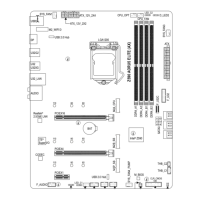


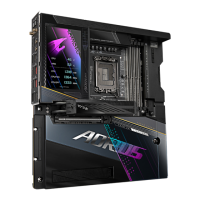
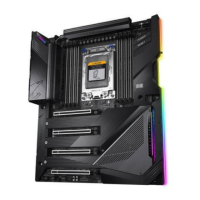
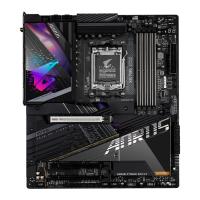
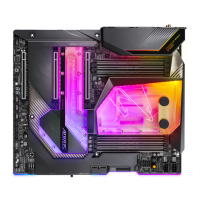


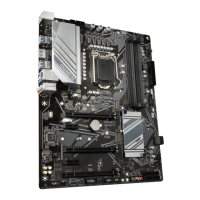
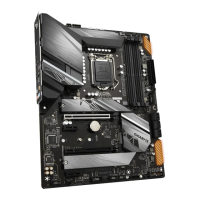
